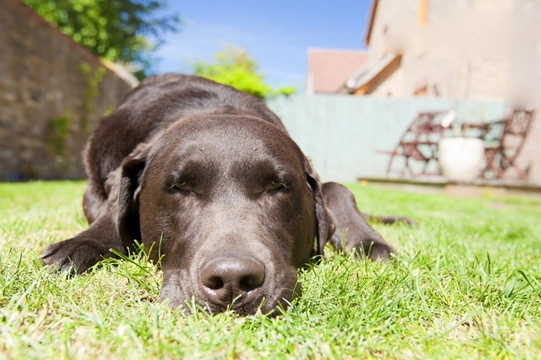
Recognising heatstroke in dogs early on
Every summer in the UK, hundreds of dogs from all across the country need to make an emergency trip to the vets, due to falling ill with heatstroke in the hot weather. Heatstroke can be fast in onset and also potentially serious, but it is also entirely preventable with vigilance, and by taking a few steps to ensure your dog’s safety and comfort when the weather heats up.
One of the best ways to stop a problem before it has the chance to become acute and potentially life threatening to your dog is to learn how to recognise the early symptoms of overheating and heatstroke, as well as the combinations of factors that can cause it. In this article, we will teach you how to recognise heatstroke in the dog during the early stages, and how to identify the potential factors that can cause it. Read on to learn more.
What is heatstroke?
Heatstroke is a condition caused by a range of factors that lead to a dangerous rise in your dog’s body temperature, to the point that they are no longer able to manage their own temperature or keep themselves cool enough. Dogs cool down by means of drinking water, panting, resting and seeking out cooler areas, and if your dog cannot do any of these things, they run the risk of developing heatstroke in hot weather.
What factors can lead to heatstroke?
Heatstroke happens almost exclusively during the hotter months of the year, but high temperatures alone are not enough to cause the problem. In order for your dog to develop heatstroke, they also need to be exposed to some of the factors mentioned above that limit their ability to stay cool, such as too much activity in hot weather, not being able to find shade, not drinking enough water and not being able to get enough air. The latter issue is particularly a problem in brachycephalic breeds, those with short muzzles such as the pug and the bulldog.
Some common scenarios that can lead to heatstroke include:
- Too much vigorous play and activity during the hotter hours of the day.
- Long walks in the hot sun, even if you take a steady pace.
- Being closed into cars or other hot places with restricted airflow. More information on this here.
- Not being given free access to water, or not being offered water regularly when outside.
- Being unable to find shade or a breezy area to rest in.
Recognising heatstroke early on
Assuming that you take heed of the above warnings on the factors that can cause or exacerbate heatstroke, your dog should be fine throughout the summer months, even when the weather is very hot. It is especially important to take extra care with brachycephalic dogs, and those that have very thick, dense coats, as these dogs in particular are likely to overheat.
In order to recognise the early signs of heatstroke in your dog, you should familiarise yourself with the following symptoms, stay vigilant for them, and know how to identify them.
- Panting excessively even when at rest, or problems breathing.
- Gasping for air, which often includes tilting the head back.
- A bright red tongue that is darker than normal.
- Disorientation and confusion in your dog.
- Dehydration.
- Dizziness.
- Dry, hot skin.
- Fainting or appearing to be semi-conscious.
- Weakness and appearing shaky when walking.
- Thick saliva that has a gluey consistency.
- The inside of the ears appearing bright red.
- Generally, the gums will be very pale, but in some cases, these too may appear bright red.
- Vomiting.
- Diarrhoea.
- Distress and visible signs of discomfort.
- A temperature over 104 degrees Fahrenheit.
- A faster than normal pulse rate.
Nipping problems in the bud
Usually, the first signs that your dog is not coping well with the heat will include a rise in body temperature, panting or gasping, the beginnings of disorientation, and dehydration. You can check if your dog is dehydrated by pinching a loose patch of skin lightly between your thumb and forefinger, and if your dog is well hydrated, this should spring right back into position. If it takes a couple of seconds to spring back, your dog’s hydration levels are too low.
Dogs that are beginning to develop heatstroke may even refuse to drink water, and so keeping your dog hydrated all day long is vital to prevent a problem from developing.
If your dog is in the very early stages of heatstroke, you may be able to reverse the condition before it becomes a problem, which means cooling your dog down immediately by any means possible. Placing cool, wet towels over them and changing them over as soon as they become warmer can help, as can moving your dog to a cooler spot right away, possibly using fans to provide airflow. Lying your dog in front of the open door of a fridge or freezer is another way to get your dog’s body temperature down too.
Heatstroke can be fatal, and requires prompt veterinary attention if it becomes pronounced, which can happen very quickly. Take steps to avoid your dog from developing heatstroke in the first place, to ensure that their summer is safe, pleasant and fun for them.



